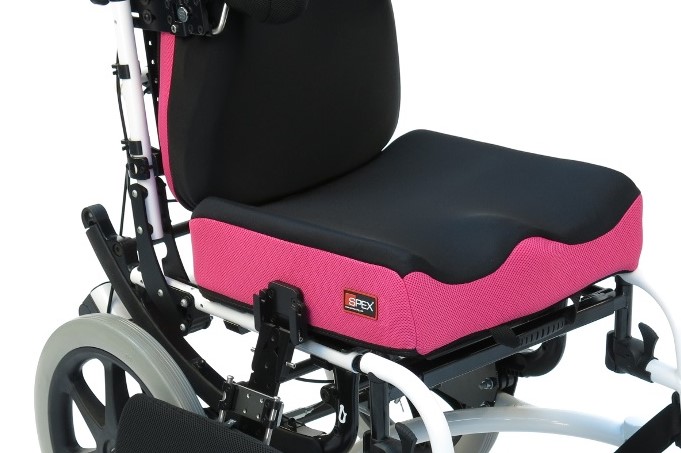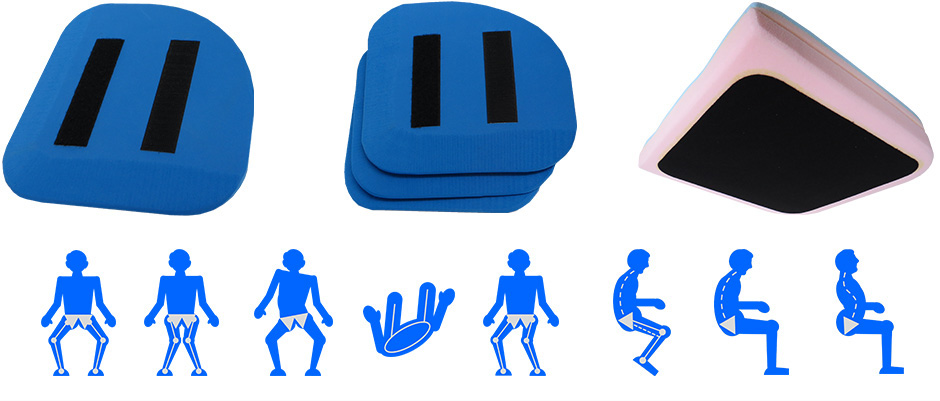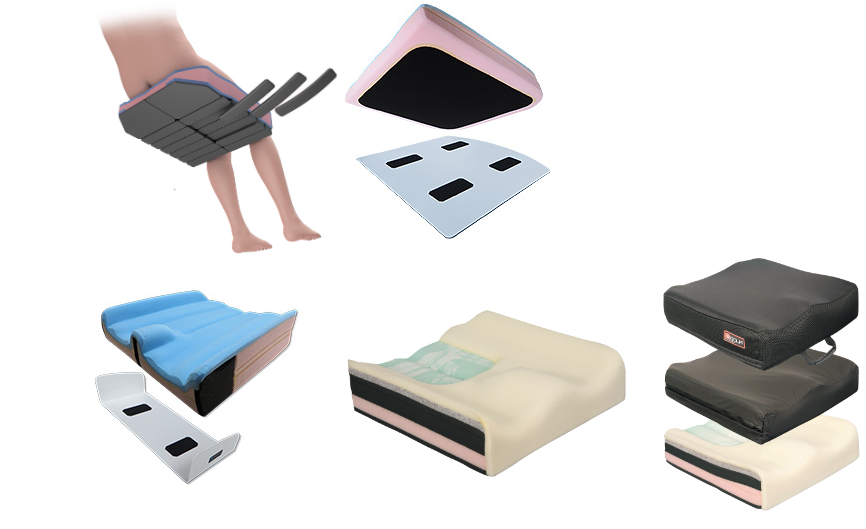KNOWING WHAT TO LOOK FOR WITH WHEELCHAIR SEAT SELECTION
Wheelchair seating can be a complex and detailed process due to many interrelated components. Achieving a good posture is one of the goals of seating because it’s important to the client’s long-term health status.

Other goals of seating include postural support, pressure management, functional capability and comfort1. The wheelchair cushion is one critical component of achieving these goals.
Every individual has a different posture when in a wheelchair, which is why it is so important that each individual is clinically assessed to determine their seating requirements. Wheelchair cushions are specifically designed to help wheelchair users position themselves more comfortably when seated. They are designed using a variety of materials, and are available in nearly every size and shape and thickness imaginable.
“Seating for task performance is not a single position, but rather an active repertoire of seated postures that the body requires in order for the mind to think, the eyes to read, and the arms to work.2”

The cushion is only one component of the wheelchair that will influence positioning, comfort and pressure re-distribution. Wheelchair cushions are also designed to:
- Reduce the risk of pressure areas or skin breakdown
- Encourage proper positioning
- Assist weight distribution
- Promote posture control
- Provide stability
- Provide comfort
- Absorb shock and vibrations

The pelvis is key to maintaining correct posture, as it dictates the position of the head, trunk, and arms above, and the thighs and lower legs below. Good posture is characterised by:
- Symmetrical alignment of the pelvis
- Shoulders slightly rearwards of the pelvis
- Maintained physiological curves of the spine
- Head balanced on the neck

TYPES OF SEAT CUSHIONS AVAILABLE:
The “type” of seat cushion your client may require will be determined by the findings from your seating assessment. Key factors, such as pressure relief, postural positioning, or comfort will determine best choice for cushion for your client.
Foam Based Cushions:
- Generally considered for those at low risk of skin breakdown
- Lightweight and economical
- May be contoured to offer mild lateral and posterior stability
Air Filled Cushions:
Soft, flexible interconnected air cells to provide cushioning for maximum comfort and support to users susceptible to skin pressure problems.
- Popular for those users who are at risk of developing pressure areas
- Easy to adjust and alter the air inflation levels to match the loading of the user
- Performance of the cushion appears to be directly related to proper inflation
- Optimise client tissue and skin integrity
- Considered to address critical pressure points, and provide a high level of skin protection
- Helps facilitates blood flow
- Some maintenance of the cushion inflation is required
Gel Cushions:
Considered to be excellent at absorbing heat and provide a high level of comfort and support.
- Moderate positioning needs
- Suitable for those at moderate to high risk of skin breakdown
- Pressure relief and comfort
- Gel assists to re-distribute weight to alleviate pressure
- Suitable for those able to perform independent weight shifts
Combination Air & Foam Cushions:
Combines both properties of air and foam together to provide optimal positioning and stable support.
- Accommodates asymmetrical postures, and loading
- Provides exceptional positioning of the pelvis and lower extremities for enhanced sitting posture
- Contoured foam base is designed to allow for increased stability for transfers
- May be optimal for those who have changing postural needs over time
- Provides pressure relief
- Improves weight distribution
- Assist those who are unable to weight shift / change position
Combination Gel & Foam Cushions:
Combines both properties of gel and foam together to provide optimal stability and superior skin protection
- Accommodates asymmetrical postures, and loading
- Stability and positioning with skin integrity protection
- Assist those who are unable to weight shift / change position
- Gel – allows for ischial immersion and envelopment
- Foam – provides a firm base to optimise femoral loading
- Provides pressure relief
- Improves weight distribution
SEAT BASE:
The seat base – the base on which the cushion will be placed - can impact the properties provided by the seat cushion. Options include:
Slung Seat Base: Some folding, lightweight transit style chairs, have a fabric, folding seat, on which the cushion is placed. As the fabric can stretch and distort over time, this type of seat base is best recommended for short sitting periods, and for those who do not require high support needs from their cushion. For example, the elderly out on an outing, a child who is transported in a wheelchair for short periods of time.
Firm Seat Base: To promote best seating posture, it is optimal if the wheelchair cushion is placed on a firm solid base. This helps to support the properties of the cushion, for pressure relief, stability and comfort. If your wheelchair is folding, it may be required that this seat base is removable, to continue to allow you to fold the chair.

Other considerations:
- It is also important to consider the material the cushion cover is made from.
- Is it required to be water resistant and easy to clean?
- Is it machine washable?
- Is it a 4-way stretch outer cover to assist with pressure and reduce surface tension?
- Is the seat cushion being placed on a firm seat base?
- Is it on a folding upholstery slung base? (this will impact the properties of the cushion ie - pressure relief, stability and comfort. Some cushions offer a firm base inside the cushion that may help to overcome this)
It is critical to choose a cushion that best suits individual needs because design of a cushion - including shape and materials, as well as characteristics of the human body - impact the relationship between pressure and internal strain and should be considered in all circumstances when choosing a wheelchair cushion. Ideally, it should conform to individual body shapes, adjust to various sitting positions, and ensure proper pressure relief beneath bony prominences to help protect from skin breakdown.
To assist you in choosing best cushion fit, it is best to consult with your therapist, who has expert skills in this area.
References:
2Kangas, Karen M. "Seating for Task Performance." SIG 12 Perspectives on Augmentative and Alternative Communication 16.4 (2007): 14-17.
http://www.spexseating.com/seating-positioning/seating-positioning-tips.
Images:
Spex Seating, Sunrise Medical


















